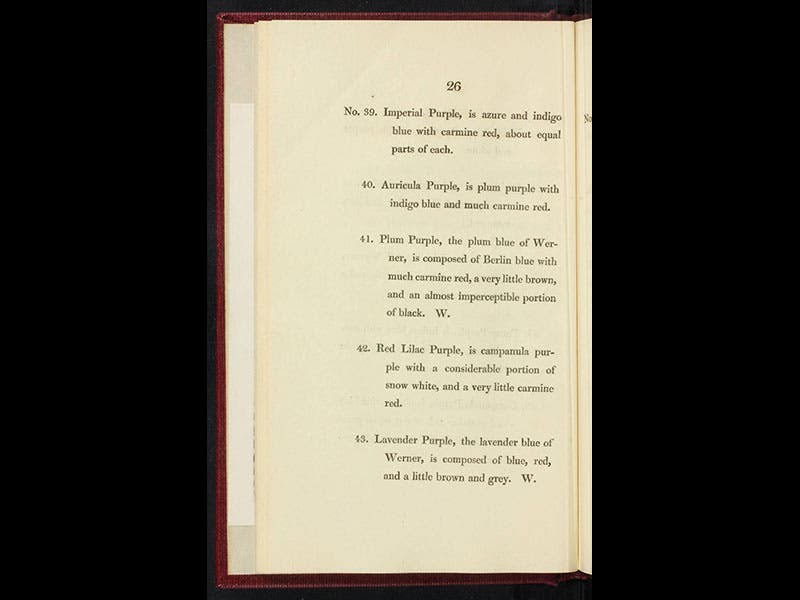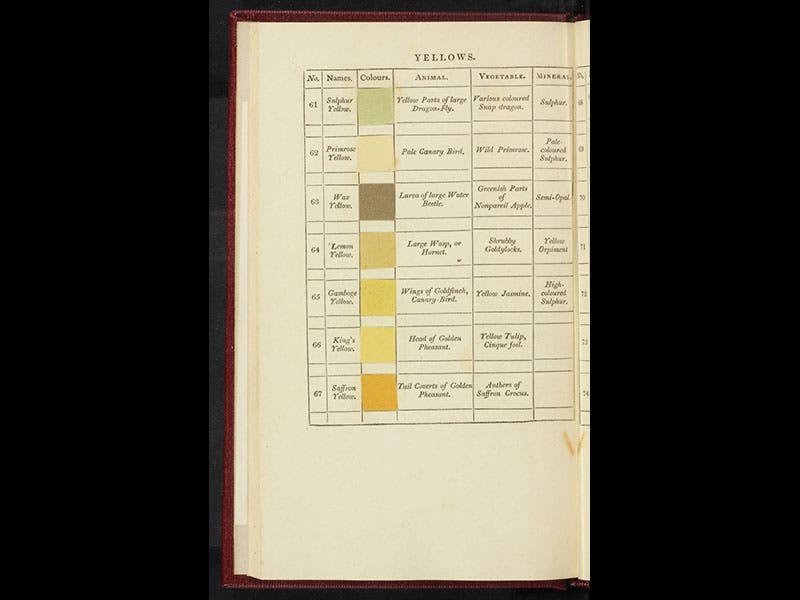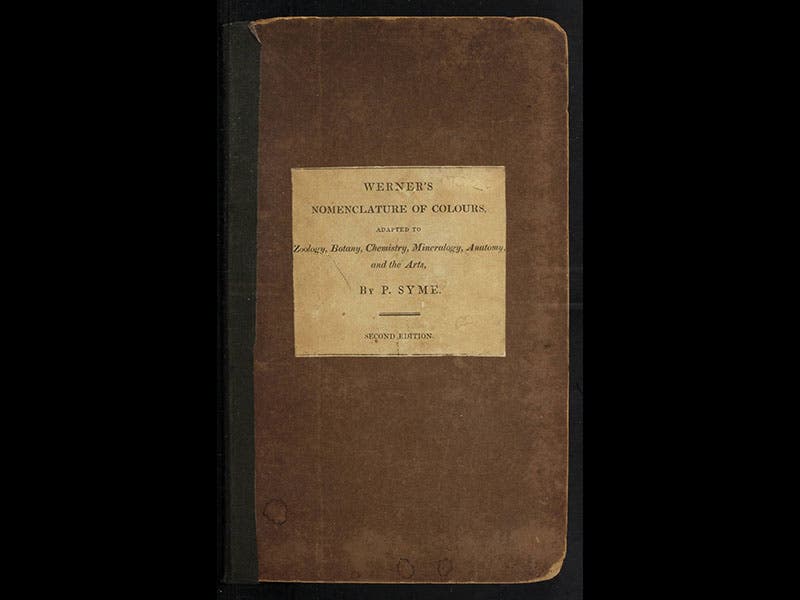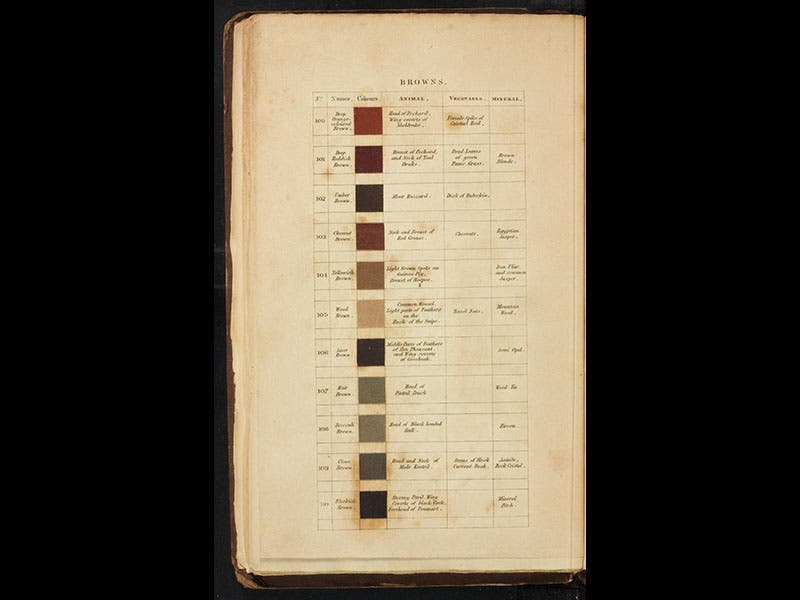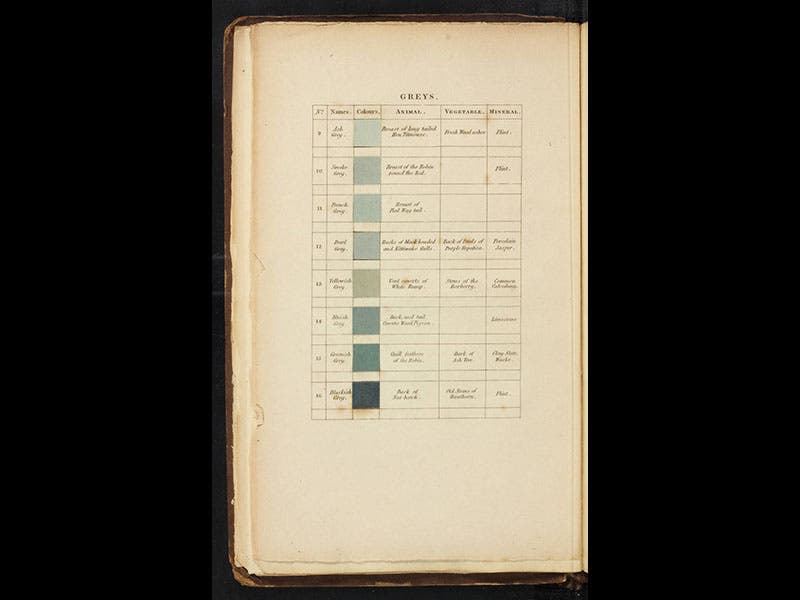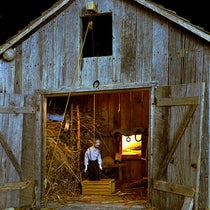Scientist of the Day - Patrick Syme
Patrick Syme, a Scottish artist, was born Sep. 17, 1774. We know hardly anything about Syme, except that in 1814 he published a book, Werner's Nomenclature of Colours, in which he attempted to provide standard color names, descriptions, and actual color samples for artists and naturalists. His book lists 108 colors, with names such as “imperial purple” or “lemon yellow” (he calls his list “Werner’s nomenclature” because the German geologist Abraham Werner was the first to attempt a naming system, although he provided no samples, and was interested only in minerals). For each color, Syme tells how to make it: “imperial purple” consists of azure, indigo blue, and carmine red, in equal amounts (see first and second images above). Then there is a hand-colored sample for each color, and several instances of where you might find this color in nature; so “lemon yellow” is the color of a large hornet, or of shrubby goldilocks” (third image)
Syme's book was an immediate hit with naturalists, and Charles Darwin took a copy of the 2nd edition (1821) on the voyage of the Beagle (fourth image) Early in the voyage, he was studying some cuttlefish, and noting their power of changing color, he observed that "clouds, varying in tint between a hyacinth red and a chestnut brown,* were continually passing over the body." The asterisk referred the reader to a footnote: "So named according to Pat. Syme's nomenclature" (the fifth image shows the Browns, including Chestnut Brown, from the 1821 edition) Darwin later told his fish expert, Leonard Jenyns, that before he described the color of anything, "a comparison was always made with the book in hand, previous to the exact color in any case being noted." We have copies of both editions of Syme’s book in the History of Science Collection. The last image shows the plate of Grays in the 1821 edition. All of the animal examples are birds; evidently, Syme was more partial to our feathered friends that those with fins.
Dr. William B. Ashworth, Jr., Consultant for the History of Science, Linda Hall Library and Associate Professor, Department of History, University of Missouri-Kansas City. Comments or corrections are welcome; please direct to ashworthw@umkc.edu.



